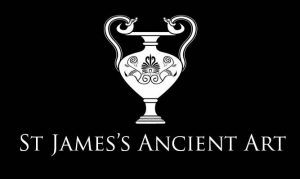The Ancient Egyptians believed that the Scarabaeus Beetle had the ability to spontaneously regenerate itself from cow dung, which these beetles roll around. The scarabs would form small balls by pushing the dung forward and then bury themselves and lay eggs inside. Consequently, the scarab came to be associated with the spontaneous continuation of the life cycle. In addition, this movement resembled the journey the sun does every day across the sky and therefore the Egyptian God Khepri, who represents the morning sun, became strongly associated with this insect. Scarabs are amongst the most popular and most numerous of all Ancient Egyptian artefacts and were especially employed in the funerary context. Scrabs and scaraboids have been used as decorative motives on rings since the Egyptian New Kingdom, with examples excavated from Greek, Cypriot, Etruscan and Roman cultures.
Thutmosis III (or Thutmose III) meaning “Thoth is born” was a New Kingdom, Dynasty 18, pharaoh from 1479-1425 BC. He ascended the throne at 2 years old and was co-regent with his aunt, Hatsheput, for the first 22 years of his reign. Following many successful military campaigns, Thutmosis III expanded the Egyptian empire to its largest extent. Thutmosis III’s reign also saw some significant developments in the arts including new forms in monument and sculpture. Not all amulets bearing a royal name are contemporaneous to the ruling pharaoh. Some kings were held in particularly high regard, and thus their name appears on scarabs hundreds of years after their reign. Thutmosis III of Dynasty XVIII was particularly honoured in this way, with his praenomen, Men-Kheper-Re, used on amulets and scarabs for a period of around 1000 years.
To discover more about amulets in the Ancient Egyptian world, please visit our relevant post: Amulets in Ancient Egypt.






